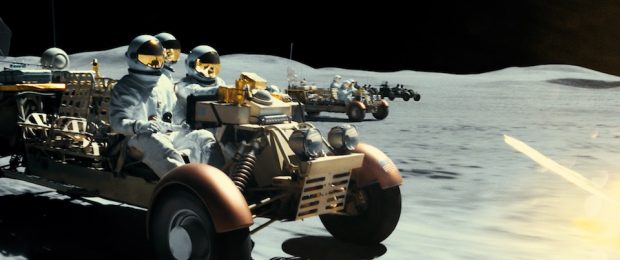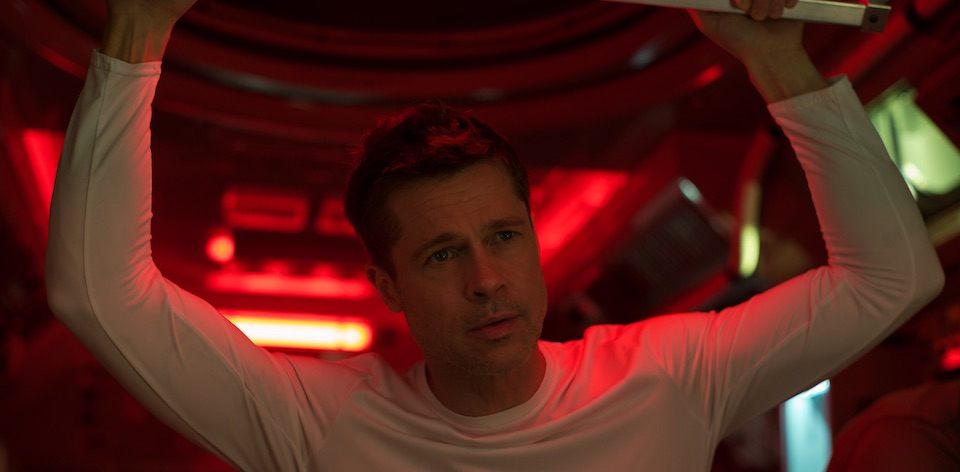There is a sub-sub-genre of slow space cinema that has rolled out at a measured pace over the decades. From 2001: A Space Odyssey and Solaris through to Gravity and Interstellar, man has been slipping the surly bonds of Earth and touching the face of something otherworldly. Director James Gray’s AD ASTRA follows in this tradition, mixing ennui with exploration.
At some point in the not-too-distant future of humanity, evidenced by a giant space antenna in the opening scenes, our Solar System is struck by a series of threatening power surges. Cool-as-a-cucumber astronaut Major Roy McBride (Brad Pitt) is tasked with journeying into deep space to stop the pioneering astronaut that Space Command believes is responsible: Roy’s father, H. Clifford McBride (Tommy Lee Jones).
From the moment Pitt starts plummeting towards Earth in the opening scenes, Gray ensures that this is one of the more “realistic” space films of recent memory. Eschewing the clean Star Trek future, or the gothic space trucker leanings of Alien, the production design team aim for something more timeless here. Until we see the commercialisation of the Moon’s colonies – a more sanitised version of Paul Verhoeven’s Total Recall – this could be set in any time or place.

Gray steadily builds on this aesthetic by adding in logical escalation points. Space travel is not simply a warp speed away from one’s destination: Pitt’s character must fly commercially to the Moon, avoid space pirates (in a brilliant, almost silent, chase sequence), hitch a ride to Mars, before stowing away to his final destination. There’s a wonderfully tense scene that uses nightmare logic: Pitt runs towards his destination, but due to the gravity and his suit, his steps don’t seem to be getting him any closer to the ship.
Yet this is all there to sell the more intimate personal drama. Despite the sci-fi shopfront, this is a character piece about a man incapable of intimacy thanks to his unresolved issues with his father. Pitt’s unemotional facade borders on the robotic, but the emotion tap bursts at the right moment. A (inter)stellar cast includes Donald Sutherland in a small but crucial role. The very male-focused script sees a barely present Liv Tyler as a character who exists largely in memory, while the formidable Ruth Negga turns up for a few lines of exposition in a wasted opportunity.
Which might be where some people land on AD ASTRA. While it follows the trend of current space cinema, landing somewhere between The Martian and Interstellar, it may leave some viewers out in the cold. Even so, the ultimate resolution is an uplifting one, and perhaps an unexpected one given the bleak outlook of the rest of the film. It’s a reminder that while our terrestrial interests may be mired in commerce and war, there’s a great big beautiful universe just outside the borders of our big blue marble. Plus: there’s also space monkeys.
2019 | US | DIRECTOR: James Gray | WRITERS: James Gray and Ethan Gross | CAST: Brad Pitt, Tommy Lee Jones, Ruth Negga, Liv Tyler, Donald Sutherland | DISTRIBUTOR: 20th Century Fox (AUS) | RUNNING TIME: 124 minutes | RELEASE DATE: 19 September 2019 (AUS)





